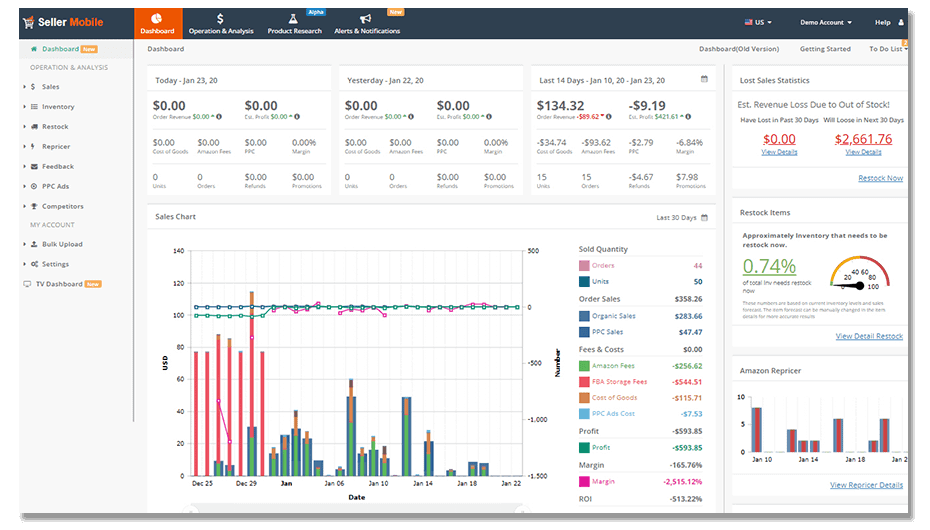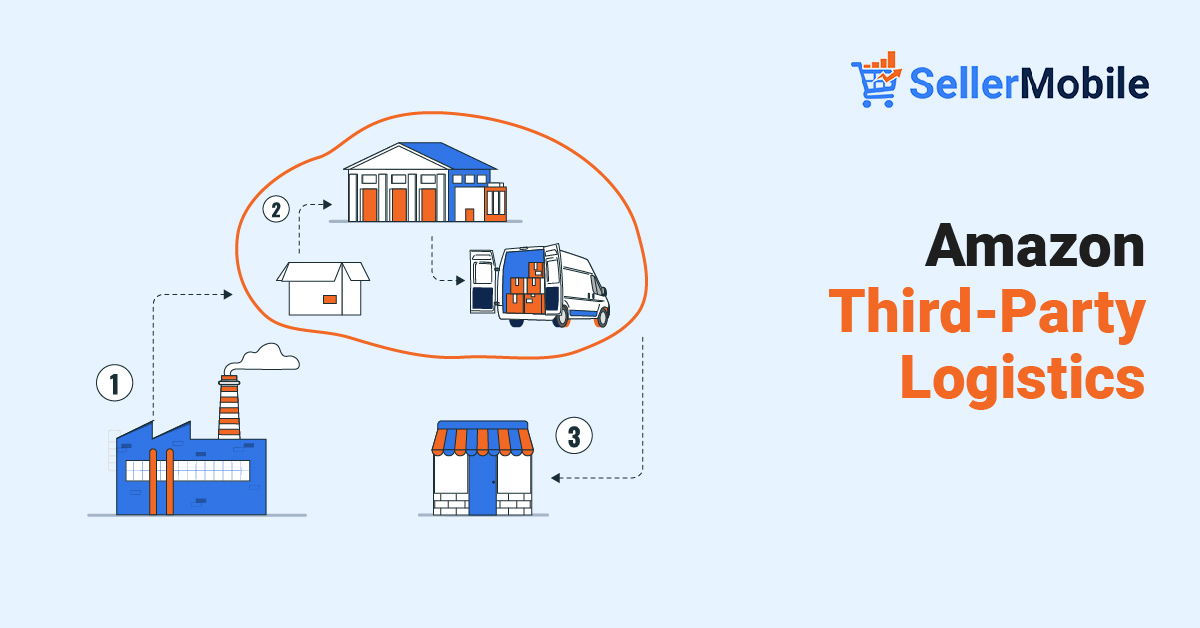E-commerce has become an integral part of global retail with a highly competitive environment and millions of businesses selling online. Therefore, more businesses are thinking about outsourcing their fulfillment procedures to stay profitable and competitive in the market.
The forecasts say the global eCommerce market is expected to reach $6.3 trillion in 2023. Isn’t it a good reason to start thinking about scaling your eCommerce business effectively? The third-party logistics provider, or simply 3PL, is the way to grow faster, even if the online business owner has limited resources.
When the company is expanding, it’s critical to manage order fulfillment to provide the best services to the customers amid fierce competition. Through Amazon 3PL, the sellers can no longer bother about operational headaches like inventory, warehousing, and distribution management.
Do you want to know how 3PL is working? This article will reveal 3PL’s core benefits, showcase why using partners is helpful, and identify the types of Amazon 3PL companies that help optimize online sales.
Hint: Use Amazon FBA If…
Amazon FBA is a service provided to online sellers with a professional or selling account that helps them deliver their products to customers. It is a comprehensive solution empowering business owners to scale operations in the world’s largest online retailer. With FBA, sellers send their products to Amazon’s fulfillment centers, where they are stored, packed, and shipped to customers.
The number one reason to leverage FBA, used by more than 73% of sellers on Amazon, is that it provides access to a massive customer base. The eligible products are shipped fast, while the seller saves on fulfillment-associated costs. Thus, the Amazon seller relieves from time-consuming and expensive operations such as leasing a warehouse or hiring personnel to provide customer support.
Thus, small online stores or established brands can use the FBA tools to save money and expand their reach.
Here’s how SellerMobile can help you get started:
What Is Amazon 3PL?
The volumes of Amazon sales are so high that businesses simply cannot cope with all logistical issues alone. This is why they prefer hiring Amazon 3PL partners to tackle some of the most pressing issues related to supply chain and fulfillment processes.
Recent studies show the 3PL Amazon market reached $992 billion in 2022 and is projected to grow to $1.4 by 2026. This is the reason that lots of companies want a reliable partner who will help them navigate only supply chain complexities. Moreover, shoppers usually look for products under the Prime category, meaning Amazon fulfills that order and delivers it within two days.
For example, if a brand is selling kitchen or washing appliances, the storage and shipping affect the profit considerably. Now imagine selling dozens of these items a day. Thus, the 3PL for Amazon sellers prefers an easy way of outsourcing this process from start to finish.
How Does a 3PL Work?
Choosing Amazon 3PL logistics to cut costs is beneficial in the long term. This is a great option, first of all, for companies that are selling more items than they can store.
Let’s explore the main functions of 3PL:
- Order fulfillment
- Inventory Management
- Warehousing
- Expedited Shipping
- Return Processing
- Customer Support
Cooperation usually starts from an initial consultation considering the client’s logistics needs. If an agreement is reached, the provider optimizes the process to streamline the supply chain. This starts from receiving and organizing stock-keeping units (SKU) up to shipping the item or processing the return.

In addition to growing rates of online business, the sellers often face other factors like fuel prices or shifts in regulations that can dramatically affect the profit. With this in mind, many of the sellers choose 3PL for Amazon to avoid fluctuations in demand and supply. They also handle international shipping and customs documents.
If you now wonder what the difference between 3PL and FBA is, the latter enables an online business owner to deliver products through Amazon for distribution. In the case of 3PL, you entrust storing and shipping to an operating company.
1PL vs. 2PL vs. 3PL vs. 4PL vs. 5PL: Brief Overview
There are different types of companies operating as logistics providers that fall under 5 categories. The terms 1PL, 2PL, 3PL, 4PL, and 5PL refer to various levels of involvement and complexity in the transportation and distribution of products.
1PL is the basic model of logistics management when the manufacturer manages warehousing and distribution in-house without attracting other companies. For example, a toy-producing company is in charge of the distribution of its products to supermarket chains. The con is these kinds of companies cannot achieve the level of scalability that the external provider could have offered.
2PL assumes a toy-producing company is hiring a middleman, a logistics company, to ship the merchandise to the stores. The 2PL typically have their own means of transportation, like airlines, ships, or cargo trucks that transport the goods. Thus, they help retailers who cannot afford to manage the logistics internally.
3PL companies come to help with each activity in the supply chain, from order fulfillment to shipping the products. They manage the day-to-day operations of a toy factory and take outsourcing a step further. Companies provide end-to-end logistics solutions, including inventory, assembly, and packaging.
💡Pro Tip: Here’s a complete overview of simplifying Amazon inventory planning with SellerMobile!
4PL goes beyond traditional logistics management and also involves procurement, finance, and IT aspects. In fact, dealing with 4PL means a toy factory is managing the entire supply chain for the manufacturer. Such companies work closely with producers to identify objectives and needs.
5PL leverages cutting-edge technologies such as big data and AI to create a self-organizing logistics system. The 5PL provider uses data analytics to ensure the efficiency of each part of the supply network. In other words, they plan, organize, and implement logistics tasks with the use of advanced technologies.
Main Types of 3PL Amazon Companies
There is an extensive network of companies dealing with the distinct types of Amazon 3PL services. Each type is focused on specific functions to ensure seamless operation of the seller’s supply chain. Some offer warehousing or transportation, while others are specialized full-service companies.
If a seller is seeking external help, he/she must consider the goals and needs of his business before entrusting operations to Amazon 3PL. Most importantly, the seller can liaise warehousing or delivery to this company, retaining oversight of the provider. Stay tuned to explore the key features and functions of these companies and their critical roles in eCommerce growth.
1. Full-service 3PL Companies
These providers offer comprehensive end-to-end services covering various aspects of the supply chain. The specifics of such 3PL Amazon companies are that they care for storage, shipping, order fulfillment, and return management in and outside the U.S. They are ideal options for sellers facing growth challenges.
Who can benefit from a full-service provider? The first is a small startup business that comes to mind. New eCommerce companies often lack the resources and infrastructure to scale their sales. Imagine there is a surge in demand for a particular product. Still, a company cannot satisfy it because of limited resources or sellers offering seasonal goods who are also the target group. The 3PL partner will ensure they can efficiently manage the peak periods and stay profitable.
Online retailers willing to expand globally can use most partners with established international networks. Thanks to the global fulfillment centers, they would deal with customs compliances, cross-border shipping, or currency fluctuations. Additionally, companies selling a wide range of products with different storage and delivery requirements often cannot overcome the challenges.
To sum up, partnering with a full-service provider brings flexibility and keeps the profit margins strong.
2. 3PL Warehousing Companies
The companies managing storage and distribution play a key role in the supply chain. When getting too many orders online, the eCommerce merchants are busy developing sales strategies and marketing their products. Meanwhile, the Amazon FBA 3PL is the party to handle the rest of the complex tasks, such as storing the items and finding enough space for new products.
In addition, the manufacturers often need to store raw materials and components. The company can offer secure storage, which is an efficient way to reduce costs. For example, the pros of such an approach for food and beverage sellers is that 3PL provides temperature-controlled warehouses, which is expensive for farmers and small producers.
Anyway, before a handoff of storage operations to the 3PL, monitor if it is right for your business by comparing the expenses with estimates of the provider.
3. 3PL Transportation Companies
In order to ensure profitability, it’s essential to calculate the average shipping costs and consider the percentage of gross sales. For many businesses, shipping costs are too high to handle.
This is when choosing the right transportation companies is a must. An online retailer can hardly afford to have a cargo truck, let alone liaise with an airplane to ship the goods overseas. A transportation company may have a network of partners shipping your goods by air, sea, or railway. In addition, it optimizes the load and forecasts freight fluctuations to optimize the costs for any type of retailer, from mouse pad sellers to fashion brands.
4. Information-based 3PL Companies
These providers excel in offering cutting-edge tools and insight to optimize logistics operations. They leverage data-driven solutions and go beyond traditional logistics. These companies use expertise in accounting and financial processes to maintain optimal stock levels and reduce costs.
When the seller is developing a business to get to over six figures in revenues, the operations require industry-specific insights and data-driven decisions. The information-based 3PL partners use technologies and data visualization to identify areas for improvement. Advanced cost control, freight auditing, and robust inventory tracking are their instruments for using real-time data and enhancing logistics flows.
Fulfillment Process with Amazon 3PL Partners

Image source: Amazon
Inventory Storage→ Order Processing→ Packing→ Shipping
The first crucial step in the fulfillment process is finding the best 3PL for Amazon sellers. The retailer has to evaluate the potential partners based on their costs, capabilities, and scalability. Global presence, range of services, and delivery performance are the factors to consider. Calculate the costs and how hiring a third-party company would impact long-term business growth. When the seller is done with partner selection, it’s time to proceed to logistics operations.
Inventory Storage
The sellers send their inventory to the Amazon 3PL warehouse, where it is received, inspected, registered, and stored. The company ensures the goods are in proper condition and ready for fulfillment. Here, storing and tracking is essential so sellers can quickly and efficiently satisfy customer demand.
Order Processing
Once a seller orders, the 3PL partner picks the item from the warehouse. Have you ever seen huge warehouses with thousands of boxes? Yes, it’s where the products are stored and are divided into zones under various categories. Each has a barcode to help the workers to find the item.
Packing
The goods are wrapped and packed in boxes using packing types and other materials. The process includes generating shipping labels to ensure proper packaging and maintain inventory accuracy.
Shipping
The next step for 3PL is to deliver the products to customers using a network of shipping partners. Sellers and customers can track the progress. With our state-of-the-art automation systems, it’s possible to track even multi-channel fulfillment orders.
Reverse Logistics
The return policies among sellers may vary, but it’s crucial to handle this essential aspect of e-commerce efficiently. If a customer decides to return the product to the fulfillment center, the partner company oversees inspecting products and restocking them as needed.
When working with a 3PL partner, it’s important to have automated tools to access comprehensive reporting and analytics.
Pros and Cons of Amazon 3PL Services
Although the 3PL is a popular choice for the eCommerce business, there are notable advantages and disadvantages of entrusting all operations to a third party.
Pros
- Cost Savings: By outsourcing some of the hardest tasks in the supply chain, the online market owner saves on operational costs. There is no need to invest in a warehouse or staff, while 3PL companies can also offer lower prices for storing or packaging materials.
- Global Infrastructure: A company with a network of shipping partners worldwide would allow selling worldwide. The sellers reach a broader customer base with the help of faster shipping options.
- Business growth: Why do people fear entering new markets and selling more goods? There is no confidence that they would lose their profit while chasing new customers. In other words, scaling business operations urges the merchant to look for a larger storage place and more infrastructure equipment. With 3PL, it’s easier to outsource some tasks to focus on business growth.
Cons
- Less control: It is obvious that the seller will lose full control over inventory and fulfillment processes when using 3PL services. An oversight from the partner may affect the reputation of a company. In addition, sometimes, the partners’ guidelines and policies may not align with the seller’s unique brand strategy.
- Fees and costs: Integrating a 3Pl company into operation requires extra costs like installing new systems and account set-up. Moreover, the services come with fees for storage, packing, and shipping charges. Be careful when calculating the costs not to affect the business profit margins.
- Long-term commitment: It’s difficult to make any transformation and exit a deal when the 3PL services are deeply integrated into the business. Transitioning from one partner to another can be complex and time-consuming.
Maximize Sales while Working with Amazon 3PL Partners!
It is not ruled out that the business owner might face some challenges with their third-party logistics provider, and it is critical to monitor the situation. The first warning signs are some inventory management issues or troubling operation cost indicators higher than expected. Therefore, it’s important to use software solutions like SellerMobile to track analytics, profit, and loss trends to change the provider if necessary.
The software platform is your eyes and ears of the eCommerce business, identifying the problems, monitoring the performance, assigning shipments to 3PL, or monitoring aggregate data. In other words, the widgets on the SellerMobile dashboard show your best-performing products, alert about overstocking, and track KPI.

The system enables the user to manage multiple seller accounts and to track the inventory across several marketplaces. The tool provides historical data on your orders and their performance. For example, if you are selling food storage, you can see whether glass or plastic containers are the top-performing items. Furthermore, you can track the percentage of items that sell more effectively and optimize the stocking strategy.
The Bottom Line
A trusted Amazon 3PL provider is the key to achieving operational efficiency, enhancing customer satisfaction, and cost savings. There are various factors to consider before outsourcing some of the operations. A number one condition is to have an understanding of why your eCommerce business needs transformation. It is achieved by means of new technologies that constantly monitor the sales indicators and keep track of the profit margins. When working with a first-class 3PL partner, the seller is safe from volatility and challenges emerging in the supply chains.











